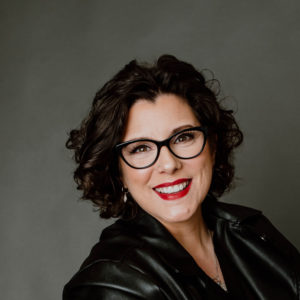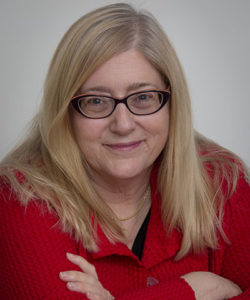Invisibility As A Superpower
Deanna Raybourn’s new novel, Killers of a Certain Age, is everything a crone could hope for in a tale about a trio of sixty-something women assassins. As Raybourn says in our interview below, “I was supposed to be writing women doing unexpected, cool, badass things and working as assassins was the most unexpected, cool, and badass thing I could imagine.” How great is that?
- Your editor, Danielle Perez, called one day and said, “We think you should write a book about older women.” Why was that important, to her and to you? (And brava, by the way!)
It came out of a conversation at the publishing company where they were sitting around bemoaning the fact that there are so few books published where women are older and generally doing awesome things. They thought I might be interested in writing something along those lines, and that was literally the entire brief—older women being badass. That was it. I could have written about medieval nuns or Regency duchesses, but I really wanted to push myself to write a contemporary and they were kind enough to let me.
- How did you get from a book about older women to a book about older women assassins? And whence came that fabulous title?
I can’t take any credit for the title. My working title was HAZY SHADE OF WINTER which I was unanimously informed was terrible. But I’m not precious about titles; I’m happy to defer to the folks who are very good at that sort of thing, and the vice-president of PR for Berkley, Craig Burke, is VERY good indeed. He just dropped that suggestion into conversation one day and everyone immediately loved it. The idea that these women had to be killers was mine, and I was adamant. I was supposed to be writing women doing unexpected, cool, badass things and working as assassins was the most unexpected, cool, and badass thing I could imagine for them.
- Your sixty-something assassins are total badasses who also feel their age. Billie, your main character, does yoga and walks ten miles a day. Armed with nothing but a necklace, she kills a young male assassin but definitely feels it afterwards. How did you decide how to balance strength and physical vulnerability for your sixty-something killers?
It’s a sad fact that growing older means things start wearing out or breaking down or stiffening up. My knees sound like Rice Krispies when I get out of bed in the morning. But I can still do some things that I know my grandmother wouldn’t have even dreamed of doing at my age, so I think it’s a balance. You can do things, but they come with a cost. I wanted to show that because it’s authentic.
- Invisibility becomes an asset for these killers as they don grey wigs and older-looking makeup in order to go unnoticed. How did that concept arise in your writing? Was it always part of a larger point about society underestimating older women?
With aging comes an increasing invisibility for women in our society, and my editor and I were fascinated with the idea that this could be turned on its head and used as a superpower. We had a lot of discussions about how society underestimates women basically from birth, especially when you’re talking about characters who were born in the 1950s. As younger women, they are dismissed because people didn’t expect them to be trained killers—all they see are the pretty faces. And as those faces age, it’s easy to dismiss them for different reasons. But with every wrinkle comes experience and resourcefulness.
- Places become characters in this book, complete with sensory detail: Parisian catacombs, a New Orleans marketplace, a London auction house. Are you familiar with these locales, and if not, how did you evoke them so vividly for the reader?
I was lucky enough to travel to almost every location in the book—including the catacombs, which are far more dreadful than you imagine. It was an absolute joy to pull together all of these settings and be able to incorporate them into the book. Much of this book was written while I was locked down, so it gave me a chance to engage in a little armchair travel. I don’t think it’s necessary to visit a place to be able to write about it convincingly, but it certainly helps. I always include sensory detail to set the stage as well as I can for a reader—what does a place smell like? What flowers are blooming? What’s the quality of the light? Taken together, those bits of information can put a reader exactly where you want them.
- Who were your literary influences in writing Killers? For example, have you read An Elderly Lady is Up To No Good by Helene Tursten? Do you predict an older-woman-killer subgenre?
I thoroughly enjoyed Tursten’s Elderly Lady books; the notion of an older woman who is basically the anti-Marple is deeply intriguing to me. The Elderly Lady is a generation older than my killers, so her physical limitations are much greater, but so is the tendency for people to overlook her. My characters are in a transitional phase at the top end of middle age but not quite elderly, and that’s a place I’d love to see more characters inhabiting. With any transitional phase, you have people who rush through to the other side and you have people who resist the changes as long as possible, so sixty can look wildly different to different people. And I think aging in general is in flux. Sixty in 2022 doesn’t look like sixty in 1922 did. Plenty of sixty-somethings are still incredibly active in every area and I just think it’s time fiction reflected more of that instead of acting as if everyone in their seventh decade has one foot in the grave which is how it’s most often depicted.
- You are about ten years younger than your main female characters in Killers. Who were your role models and inspirations for these vividly drawn women?
Half a generation is just enough time to draw on your own experience. You can think back to when you were a child and remember the teenagers you knew—what music were they listening to? What did they do for fun? How did they dress? And it’s easy to remember those things because they were what you aspired to. The teenagers I knew when I was a kid definitely influenced my killers. Fleetwood Mac, embroidered jeans, frosted lipstick—I remember it all vividly.
Killers of a Certain Age is a well deserved New York Times best seller.


